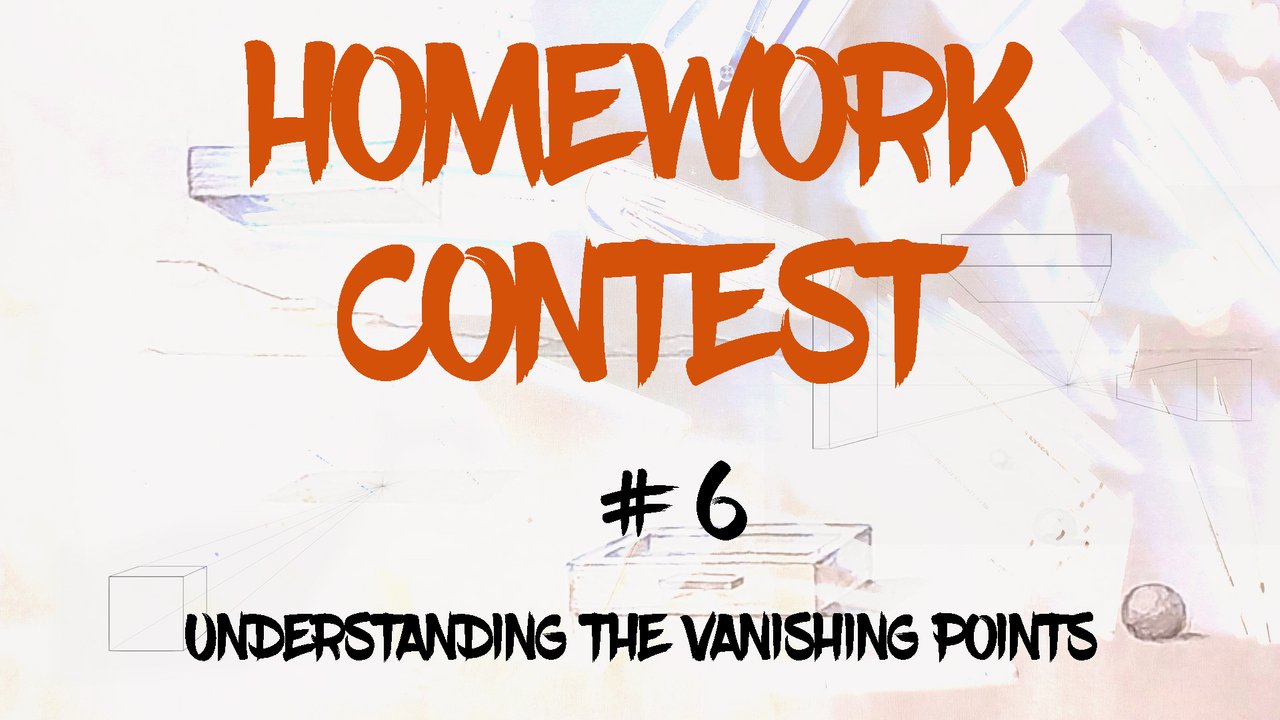
Hi friends!
Science is Art - Art is Science
Art would not have evolved as it has without discipline, without the search for answers, without the impulse to learn and know, typical of science.
Without this scientific side of art (and of artists) we would not have the oil painting, for example, or the perspective that we are now studying. Perspective is math!
Perspective, like any mathematical discipline, needs effort, exercise and review over and over again to appropriate its concepts.
It often happens that when we hear a mathematical explanation it seems very logical, perfectly clear and understandable, we can even repeat the example that our teacher has given us without difficulty, but very often, when we have to solve a different problem using the same techniques supposedly " learned" we realize that we have not fully understood the subject matter.
I hope you have done several different exercises to internalize the concepts and make them your own. Keep in mind that everything we have been seeing and practising such as the vanishing points and the helplines you will always have to keep in mind but mentally, it will not be necessary for you to draw dozens of lines because with practice your sense of depth, of space and the proportions will become more and more acute.
Well, this task refers to the masterclass from the previous post 52-Masterclass
In that lesson, I showed you what happens when we use the wrong positions for our vanishing points. In the first drawings, I let you see WHAT NOT TO DO and then I show you how to find the correct way to find the distance of the vanishing points using the top projection of a cube to extend the lines of its lateral edges towards the horizon line and in that way find the correct vanishing points. This technique is very useful in architecture and in technical drawing.
Below, in the following drawings of the master class, I showed you the result obtained by using the correct position of the vanishing points and I did not do the drawing process step by step to give you the opportunity to do it yourself to test if it has been understood the explanation.
This, below, is the correct drawing using adequate vanishing points. All the helplines used are shown.

THE HOMEWORK
Draw some cubes with the correct position of the vanishing points as it's explained in 52-Masterclass
You must make three drawings:
°The first drawing with an eye-level line in the up position.
°Make a second drawing with the same cubes (same edge height, same position and same depth) with an eye-level line in the middle position.
°Then, a third drawing with the same cubes (same edge height, same position and same depth) with an eye-level line in the bottom position.
°Let me see all the helplines you used.
° Be creative, use the next drawings ONLY as samples to get inspiration.
Sample 1 - horizon at the top.

Sample 2 - horizon in the middle.

Sample 3 - horizon below.

SOME RULERS
° The contest is open to the entire STEEMIT community
° The drawing must be a separate STEEMIT post with a link in the comments section and using the tag #woxartschool.
° You have 7 days from the day of this publication to post the link to your task in the comments.
The best homework of school participants will receive support from WOX curators.
I wish you a very nice day and good exercise!
Also, thanks to @xpilar for making these initiatives possible.
Here are the links to the previous related posts.
1-Introduction - 2-Introduction - 3-Introduction - 4-Introduction -
5-Introduction - 6-Lesson - 7-Lesson - 8-Lesson - 9-Lesson - 10-Lesson -
11-Masterclass - 12-HW Contest - 13-Lesson 14-Lesson - 15-Lesson -
16-Lesson - 17-HW results - 18-Masterclass - 19-HW Contest - 20-Lesson - 21-Lesson - 22-Lesson - 23-HW results - 24-Lesson - 25-Lesson -
26-Masterclass - 27-HW Contest - 28-Lesson - 29-Lesson - 30-feedback - 31-Lesson - 32-HW results - 33-Masterclass - 34-HW contest #4 - 35-feedback - 36-feedback - 37-feddback - 38-Masterclass - 39-HW Contest #5 -
40-feedback - 41-feedback - 42-lesson - 43 feedback - 44-feedback - 45-HW feedback - 46-lesson - 47-feedback - 48-feedback - 49-lesson - 50-feedback - 51-feedback - 52-Masterclass
100% SP (manual transfer to SP)
#club100

